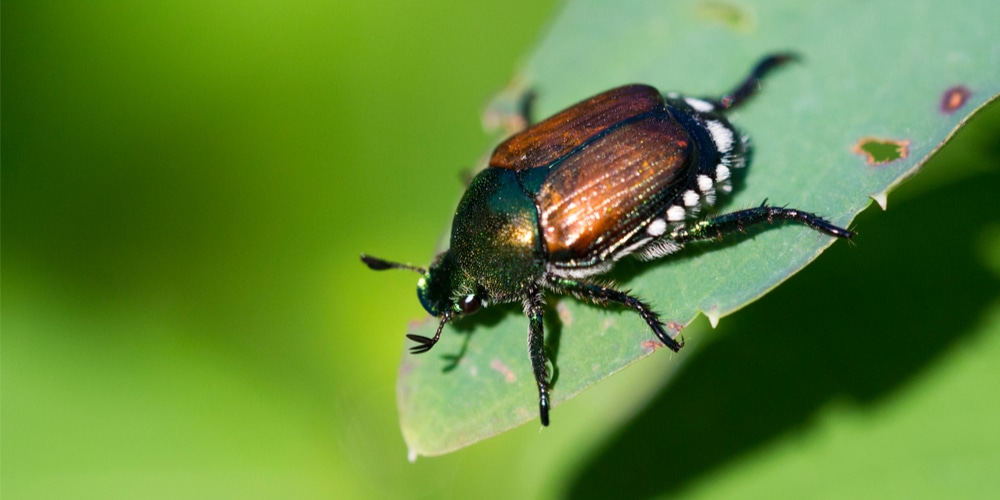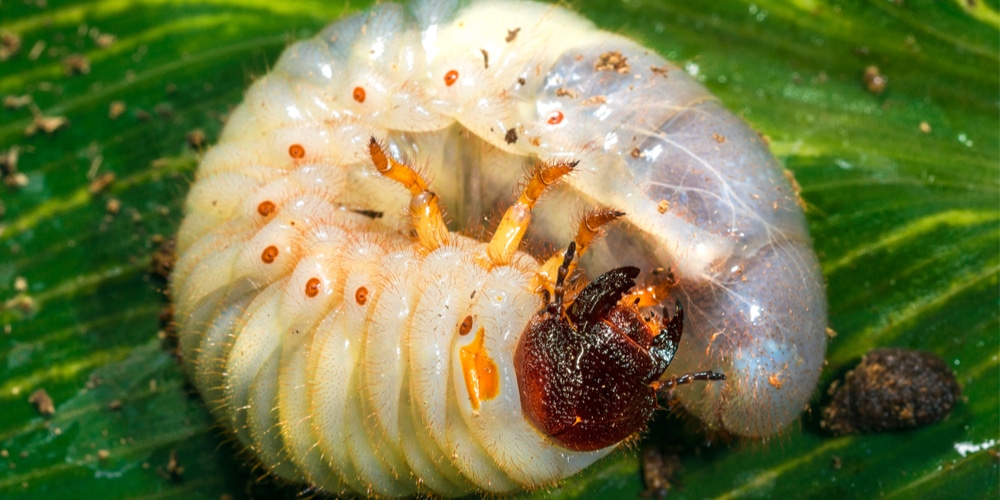Japanese beetles are green, copper, and brown and have a hard shell. They are pretty large and can be spotted in yards and gardens across the states during the day. At night the Japanese beetle will hide in an underground nest. Let’s look at what a Japanese beetle is and where they go at night.
Japanese beetles are native to Japan and other parts of Asia. They are commonly found in many countries worldwide, including America, Canada, Europe, and Asia, and are considered an invasive species that are hard to control.
Short Answer:
Japanese Beetles will hide in an underground nest at night
What is a Japanese beetle?
The Japanese Beetle is a very destructive insect with a green and brown shell. The beetle belongs to the family Scarabaeidae under the scientific name of Popillia japonica. They feed on many types of vegetation, flowers, and fruits and, in large numbers, can be quite invasive.
These beetles were accidentally brought to America in the early 1900s. It’s thought that they were transported in daffodil bulbs. They’ve since spread across the country and are considered an invasive species that can do a lot of harm to crops.
Japanese Beetles are most commonly seen during the summer and fall, especially early July to mid-September, where they can be spotted hiding in lawns and plants. Their common habitats consist mainly of landscapes that feature thick grasses or plant materials with lots of foliage. These insects will burrow into the soil or hide amongst the grass at night. They can also be found hiding amongst organic matter such as leaves and bark.
Japanese beetle lifecycle
The Japanese beetle has four stages in its development. It’s first an egg that hatches into a larva, becomes a pupa for 7 to 10 days before finally turning into an adult beetle.
The Japanese beetle has been controlled in many parts of the country, but it is still causing problems for some horticulturalists. Adult female beetles lay eggs in turfgrass to provide food for their offspring when they hatch. The young larvae grow either underground or at the base of plants.
The female beetles can live up to three months and will lay one egg cluster per week, which totals between 60 and 200 eggs during her lifetime! She’s able to fly long distances before laying them, however, so controlling adults may not protect your plant completely.
Many species of birds and wildlife feast on Japanese beetles, including racoons, moles, and even some species of spiders. Ants, cats, and robins have all been known to eat Japanese beetles.
The larvae that hatch from the eggs are called grubs, and they’re the stage of the beetle’s life cycle responsible for doing most of its feeding. The larval period can last one to three years, allowing them time to develop through several larval stages. They eat grass roots until they pupate underground in August or September, hatching as adult beetles in June or July.
During this time, it becomes important to manage your lawn so you don’t have large areas where grubs will be able to develop easily. That means using a fertilizer high in phosphorus and nitrogen to promote root growth. Keeping your lawn healthy by flushing it with water occasionally can also encourage deeper root growth, as well as discourage the presence of adult Japanese beetles. Also, aerate your lawn regularly to improve its growth.
Conclusion
Japanese beetles feed on a variety of host plants during different stages in their life cycle. The adult beetle lays eggs in the grass or soil, which live as grubs, and eat the roots of plants and grasses. Once the larvae develop into an adult beetle, they will feed on plants and are very destructive. These pests are known to be an invasive species that is hard to control.
Japanese Beetles can be seen in warm, humid regions during the day and will hide in the soil at night. Japanese beetles like hot climates and plenty of sunshine. They will hide in the soil when it gets cold and dark.
These leaf cutting insects can be a pest to horticulturalist but have a life span of just a few months. They will live as larvae in the soil for years before emerging as a beetle.

